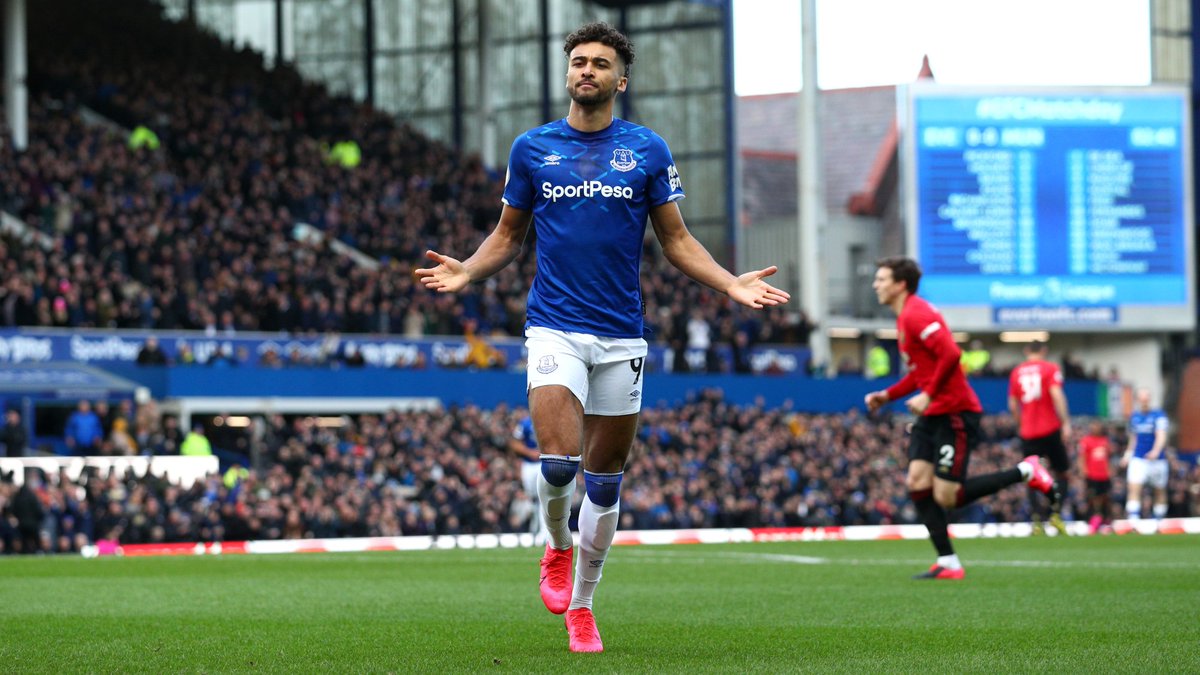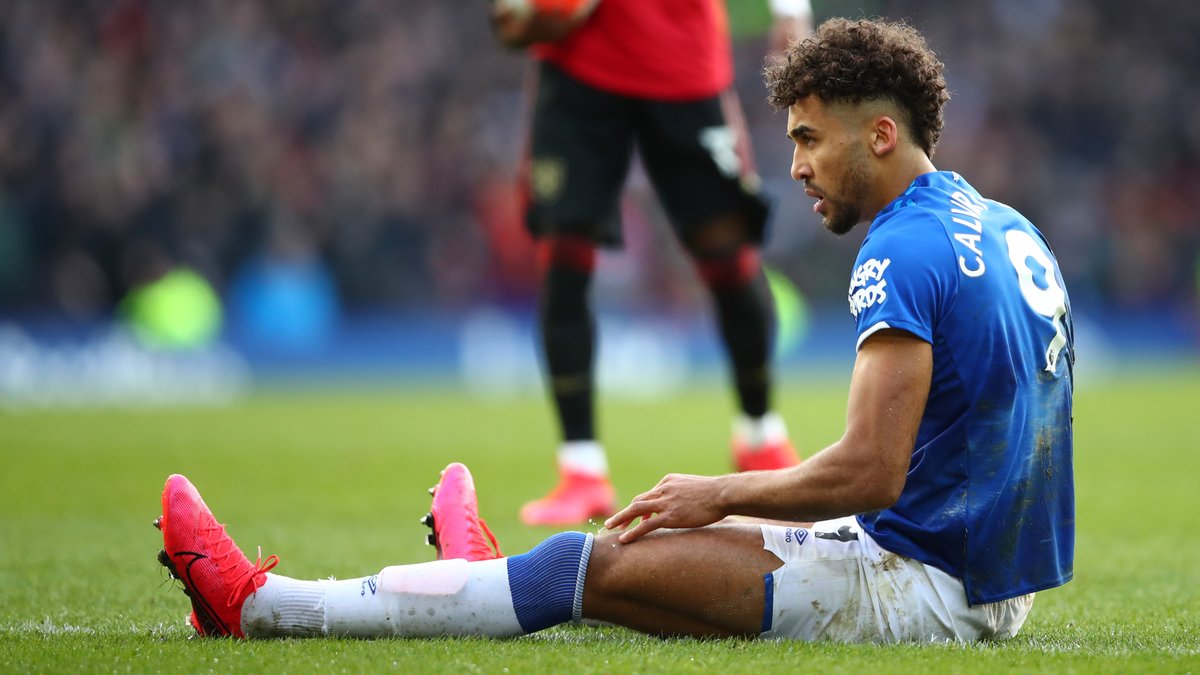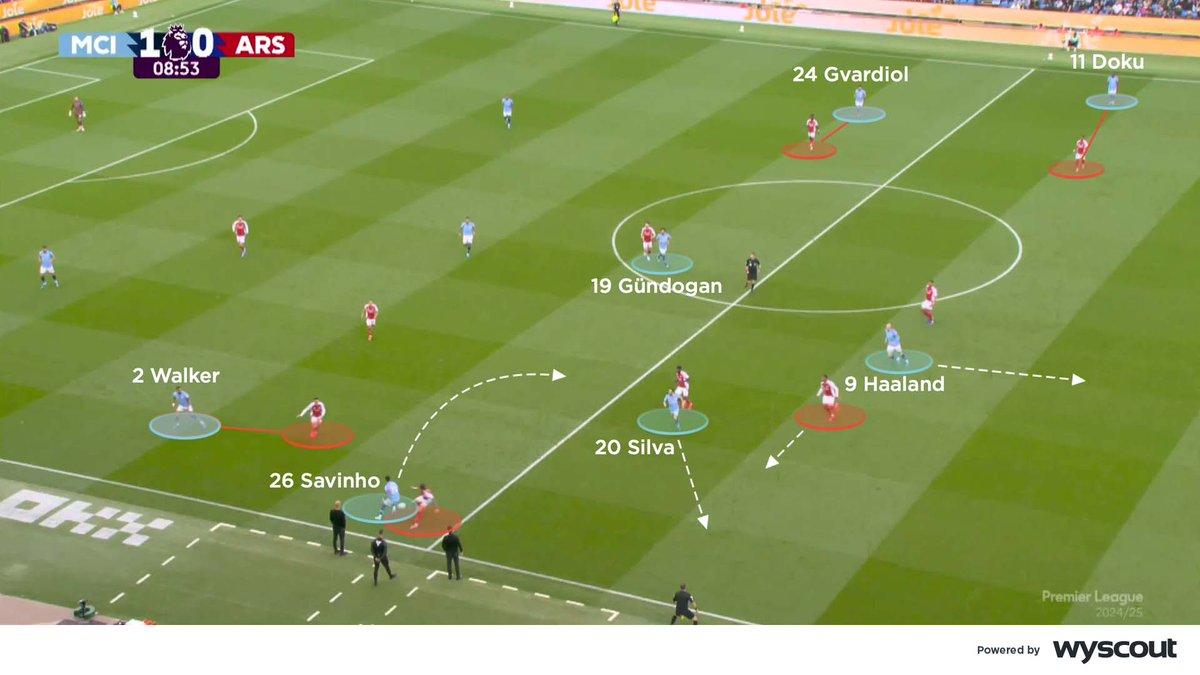A THREAD! 👇 Our coaches look at how a change of shape for Everton, as well as the arrival of James Rodríguez, has led to Dominic Calvert-Lewin's scintillating start to the season ⚽ #EFC
Carlo Ancelotti initially paired Calvert-Lewin up front alongside Richarlison in a 4-4-2 formation, but has settled on a 4-3-3 formation in 2020/21, with Calvert-Lewin leading the line on his own 🔵 #EFC 

However, with new signing James Rodríguez on the right but playing a withdrawn role, Richarlison pushes high to pin back the opposing right-back, often making runs beyond Calvert-Lewin 🔵 #EFC 

Though not a traditional strike partnership in a formation with two centre-forwards, Everton’s two most advanced players still combine regularly and often carry attacks like a front two 🔵 #EFC 

Calvert-Lewin is deadly close to goal – a feature that suits the fact that Everton play with width, and their aim to get down the flanks and put crosses into the penalty area. Everton had more headed attempts on goal than any other Premier League team in 2019/20 🔵 #EFC 

Their game has changed slightly, with Rodríguez certain never to run around the outside, but their full-backs have been given greater licence to get into positions to get crosses into the area. Both Lucas Digne and Seamus Coleman have set up goals for Calvert-Lewin 🔵 #EFC 

He positions himself between opposing central defenders – behind the near-side defender and far enough away from the other that he has space to himself. However, he sometimes darts across the defender in front of him, and at other times peeling off around the back 🔵 #EFC 

He also provides a great deal of energy in the final third, and forces defenders into mistakes by pressuring them.
Calvert-Lewin is always alert to mistakes in the penalty area, where he is proving increasingly ruthless 🔵 #EFC
Calvert-Lewin is always alert to mistakes in the penalty area, where he is proving increasingly ruthless 🔵 #EFC

He has developed into something of a penalty-box poacher, with every one of his 15 goals in all competitions in 2019/20 coming from inside the area, and all but four of them first-time strikes 🔵 #EFC 

Yet though he is lethal off one or two touches, when he has more work to do – or an opponent to beat – he isn’t anything like as effective. Too often, he gives defenders a chance to recover and block after shifting the ball to one side to shoot 🔵 #EFC 

With added potency in front of goal on top of his selfless runs, effective hold-up play and a significant aerial threat, Calvert-Lewin can make a genuine claim to be one of the Premier League’s most dangerous centre-forwards 🔵 #EFC 

• • •
Missing some Tweet in this thread? You can try to
force a refresh
















